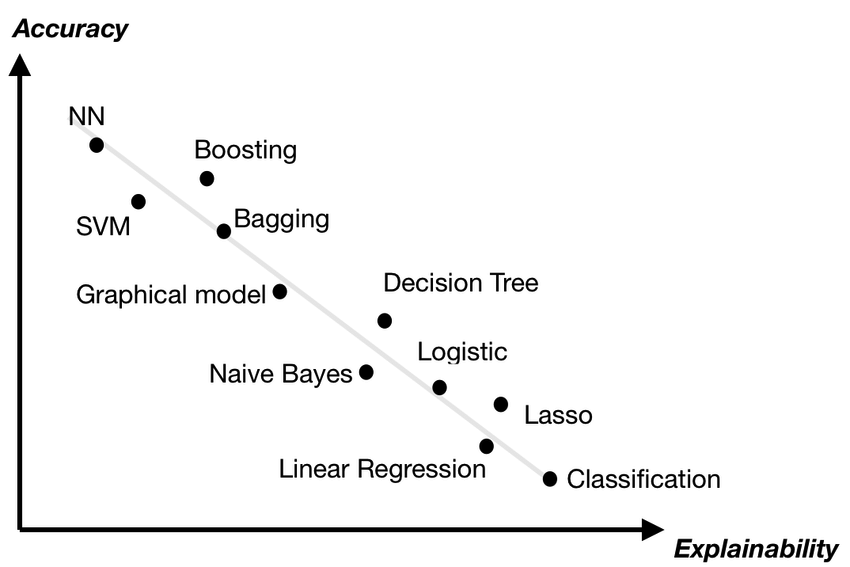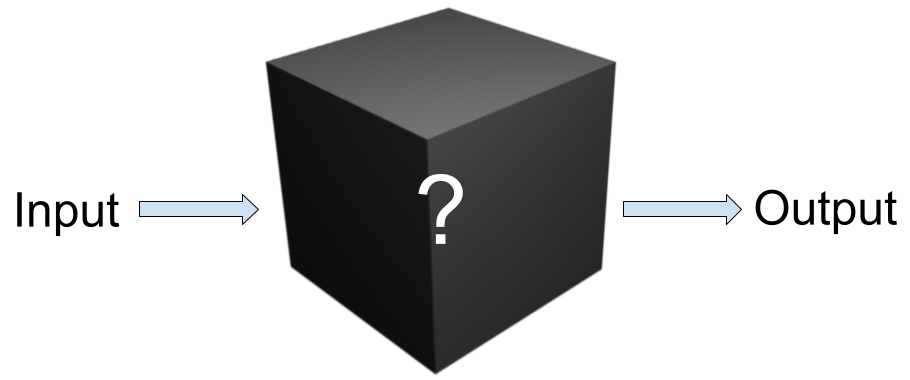What is XAI?
Why should you trust Machine Learning (ML)? Headlines are filled with fundamental flaws in machine learning models published by technology giants.

Most real-world applications lean away from inherently explainable models like decision trees or linear regression models, and towards black box models like neural networks due to their complex and robust hypothesis spaces. This flexibility often enables better representation of complex relationships. However, it also engenders a need for explanations.
This page explores the need for Explainable AI (XAI) techniques. Explainable AI techniques attempt to illustrate how a machine learning model comes to a conclusion.
Why XAI Matters
We are living through a revolution of the standards for ethical machine learning practices which has been thoroughly marked by the need to explain artificial intelligences — namely their predictions. As discussed in Ribeiro et al. (2016, p.1), the act of explaining an AI’s prediction presents the audience with visualizations pertaining to the actions it made to achieve such a decision, thus building users’ trust in the model, and exposing any possible errors in the model’s structure.
Legal Implications
With regulations like the EU’s Right to Explainability and the United States proposed AI Bill of Rights, a machine learning model may no longer be a simple “black box”: in order to prevent criminal charges, the creators of high-impact models must be able to justify each prediction. Over the past few years, the XAI field has thus become inundated with approaches, attempting to best fill a different niche.
In such an impossibly dense field, how can one quantify a method’s efficacy? Which method would a jury trust?
Ethical Implications
Although Artificial Intelligence has been used across many fields for a long time, advancements in the past few decades have led to organizations implementing them more frequently in load-bearing systems. One simple example of this Github's Copilot, which has streamlined development worldwide but often adheres to low-quality and insecure coding practices, as noted in Ugnė Zieniūtė's 2023 analysis of the tool.
However, this is not the only domain to which AI is being applied. High-risk systems are beginning to adapt AI into their core operations. As described in Sim et al. (2023), machine learning models can help to greatly expedite delivery of care, but the lack of clarity in their calculations can lead not only to incorrect diagnoses, but also to distrust in the medical system. Moreover, titan of the investment industry S&P Global predicts that AI will soon automate risk management and profit-optimization (Fernández, 2023). How do we know what these models consider a risk? How can we be sure a profit optimization is feasible and ethical?
All the Techniques Illustrated on This Website Are Model-Agnostic, Post Hoc, and Local.
What Does Model-Agnostic Mean?
A model-agnostic technique does not depend on knowledge of the specific AI model being analyzed. This means that, rather than looking at the specific activations of a neural network, or the weights and biases, we only have access to the outputs of the model. This may also be described as a black-box approach.

This is desirable for a few reasons. Work done to explain one model can be easily applied to other dissimilar models. With the same techniques in this project, we were able to analyze both images and tabular data! Moreover, it allows us to gather insights into models we don't have unrestricted access to. Given the huge investments a company makes in time and money to create the ML model weights, corporations are unlikely to be willing to share the weights. However, model-agnostic techniques only need to be able to query the model repeatedly.
What is a Post Hoc Explanation/Interpretation?
Post hoc explanations attempt to answer, in retrospect, why the model chose the output or classification it did. It's beyond the intended scope of these techniques to predict what the model will say in a future prediction, before the black box model makes that future prediction.
What is a Local Explanation?
These techniques are not focused on the behavior of the AI model as a whole, but rather on its behavior in a single instance – one data point. These conclusions are highly centered to the one prediction, which can give the user much more specific insight into one occurrence of a model's specific 'thought process'; however, these methods cannot necessarily be extrapolated too far in any direction.
This peeks out from under the umbrella of Interpretable AI, which seeks to explain more generally how an AI comes to its conclusions. These can include global explanations of how a model's processes work but are sometimes more lossy than local explanations.
The shap package, which we use to implement one of our techniques, is able to perform Cohort explanations, which lies between local and global explanation (Dhinakaran, 2021) (see Shapley and MOOC).